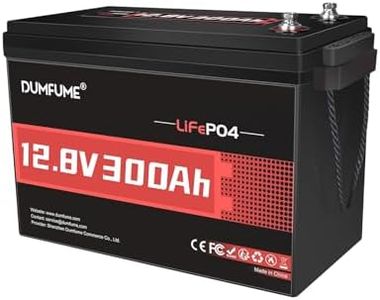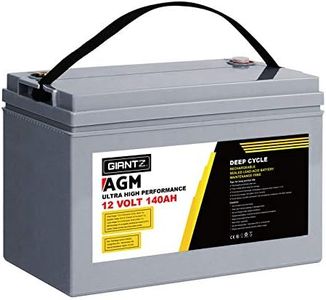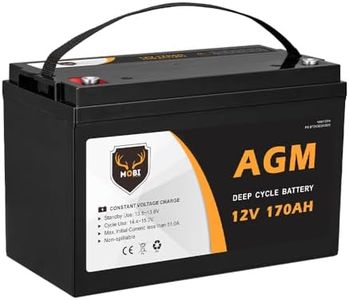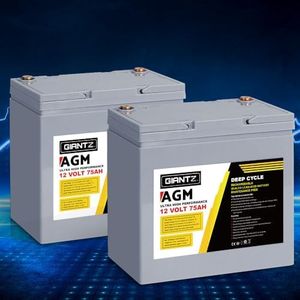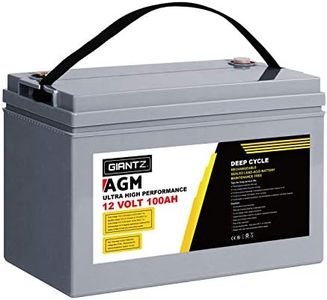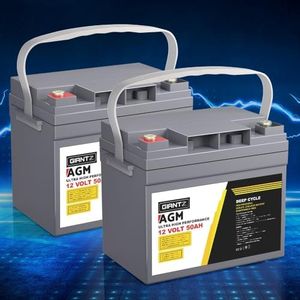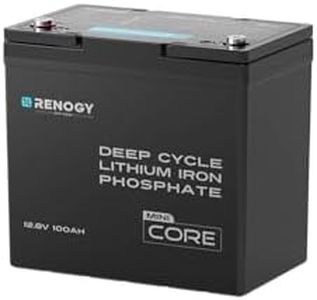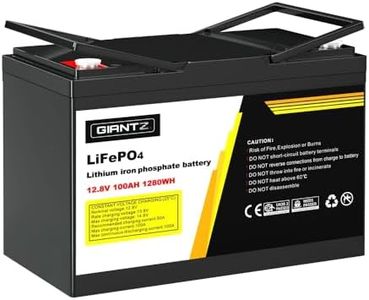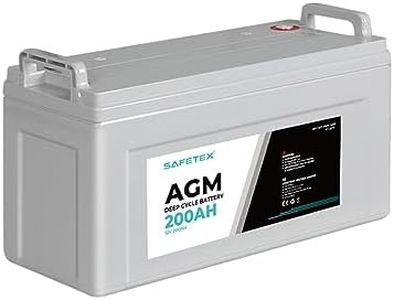We Use CookiesWe use cookies to enhance the security, performance,
functionality and for analytical and promotional activities. By continuing to browse this site you
are agreeing to our privacy policy
10 Best Deep Cycle Batteries For Power Inverter
From leading brands and best sellers available on the web.Buying Guide for the Best Deep Cycle Batteries For Power Inverter
Choosing the right deep-cycle battery for a power inverter is crucial for making sure your energy setup works efficiently and reliably. Deep-cycle batteries are designed to provide a steady and consistent amount of power over a long period, making them ideal for use with power inverters for things like home backup, RVs, boats, or off-grid systems. When picking one, you need to think about how much power you need, how long you want your device or system to run, and how often you'll be using the battery. Understanding the key specifications will help you match the battery to your actual needs and ensure safety, longevity, and value for your investment.Battery Capacity (Ah, or amp-hours)Battery capacity, often measured in amp-hours (Ah), tells you how much energy the battery can store and deliver to your inverter. Simply put, it indicates how long the battery can power your devices before it needs recharging. Low-capacity batteries (up to about 50Ah) are suited for light or occasional use, like small electronics or short emergencies. Medium capacities (about 50-150Ah) are great for running mid-range appliances, lights, and small tools. High capacities (over 150Ah) are meant for demanding setups, like refrigerators, pumps, or multiple devices running for hours. To pick the right capacity, estimate your total power needs per day and choose a battery that meets or exceeds this requirement, allowing some extra for emergencies and battery aging.
Battery Type (Flooded, AGM, Gel, Lithium)The battery type describes how the battery is built and what chemicals or materials it uses inside. Flooded lead-acid batteries are traditional and low-cost but need regular maintenance. AGM (Absorbent Glass Mat) and Gel batteries are sealed, need less maintenance, and are safer for indoor use. Lithium batteries are the most advanced: they’re lighter, charge faster, and last much longer, but tend to be pricier. For occasional or backup use, traditional flooded or AGM/Gel options work well. For regular, deep discharging or mobile setups with size/weight limits (like RVs or solar systems), lithium batteries are a great choice. Think about your frequency of use, maintenance ability, and size constraints to choose the right type.
Depth of Discharge (DoD)Depth of Discharge means how much of the battery’s total capacity you can use before it should be recharged. Deeper discharge means more use in one session, but may reduce battery life. Lead-acid types often have a recommended DoD around 50%, while lithium types can safely go 80-90% between charges. If you need to run devices longer between charges or want a more flexible setup, a battery with a higher safe DoD is beneficial. Using a battery within its recommended DoD ensures it lasts as long as possible, so compare different batteries based on the DoD you realistically need.
Cycle LifeCycle life tells you how many times the battery can be charged and discharged before it starts losing capacity. Lead-acid batteries usually last a few hundred to a thousand cycles, while lithium batteries often last several thousand. If you use your inverter setup daily or several times a week, a higher cycle life is important so you don’t have to replace the battery as often. For emergency or occasional use, a lower cycle life might be fine. Match the cycle life to how frequently you’ll use and recharge the battery.
VoltageVoltage is the basic electrical potential the battery delivers, and it needs to match your inverter’s requirements. Most inverters for home and general use are designed for 12V batteries, but some larger setups use 24V or even 48V for added efficiency. Always check your inverter’s input specification and make sure the battery’s voltage matches. Using the wrong voltage can damage your devices or the battery.
Physical Size and WeightDeep-cycle batteries come in a range of sizes and weights. If you have a fixed installation with plenty of room, heavier and larger batteries may be fine. For portable setups, RVs, or boats, compact and lighter batteries make handling and installing much easier. Always check your available space and, if mobility is an issue, go for batteries that balance capacity with manageability.
